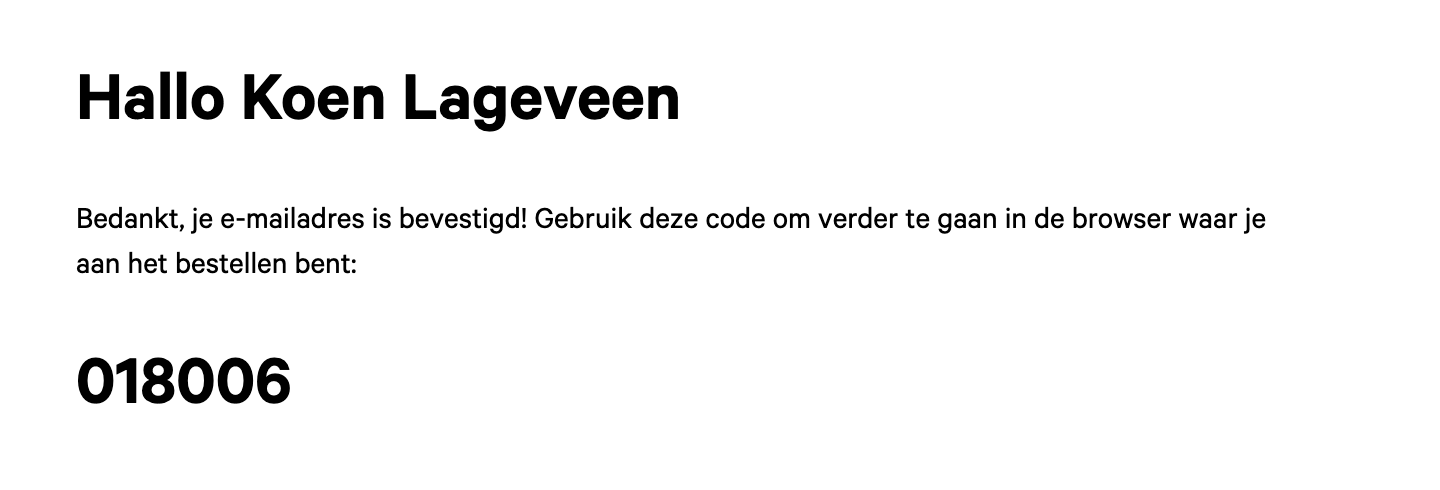Available on request on your Live website. Always available to test on your Staging (test) website.
What is light login?
Light Login is a single flow for your visitors for creating an account or logging into an existing account on your website. It replaces the flow in which creating an account and logging in are separate processes.
This Light Login flow is a single flow fit for all visitors, making it a lot simpler, quicker and more intuitive for your visitors to login to your website.
The flow can be configured in a lot of ways, depending on what data you wish to acquire from your visitors.
Texts, labels, explanations
We rewrote all texts in labels and buttons especially for the Light Login flow. You will notice the default texts do not mention words like "account". This is a deliberate choice to make the flow feel lighter and to focus the visitor more on the action he needs to perform (a visitor isn't looking to create an account, but a visitor is required to fill in an e-mail address). Furthermore, the mentioning of "account" can raise doubt in a visitor about whether he already has an account or not. In the light login flow this doesn't matter. You are either here for the first time, or you have been here before. All texts are based on "please make yourself known, and you can continue on your customer journey right away, we will sort the rest out for you".
Off course you can change all texts yourself in the template text module, by searching for the term "lightlogin".

The simple flow
Anytime you perform a action on the website that requires you to be logged in, you will be asked to log in.
(During an order, when adding an event to your wish list, or by clicking on the "My Theater" link in the main website header)

The simplest version of the light login flow contains 3 simple steps:
1. Enter your e-mail address.
This step is deliberately made very simple, just asking the visitor one thing and continue:
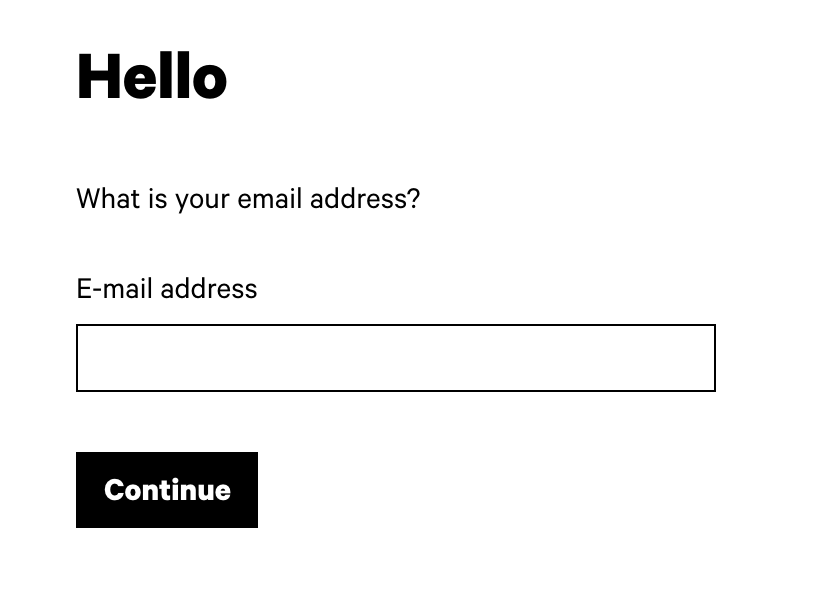
2. Choose to send a confirmation by e-mail to continue (or fill in your password).
- All new visitors will have to confirm their e-mail address at least once to make sure this is a functioning e-mail address.
- Regular visitors may be offered the option to enter the password they made a previous time, avoiding the confirmation e-mail all together. They can choose a confirmation e-mail too. It will also work.
- Regular visitors that have forgotten their password can also opt for a confirmation e-mail, rendering a separate "Forgot password?" flow obsolete.
You will notice this step is suitable for all 3 scenarios above, making it a very simple step to follow.
The e-mail address is displayed very large in this step. If a visitor has made a spelling error, it will surely get noticed.
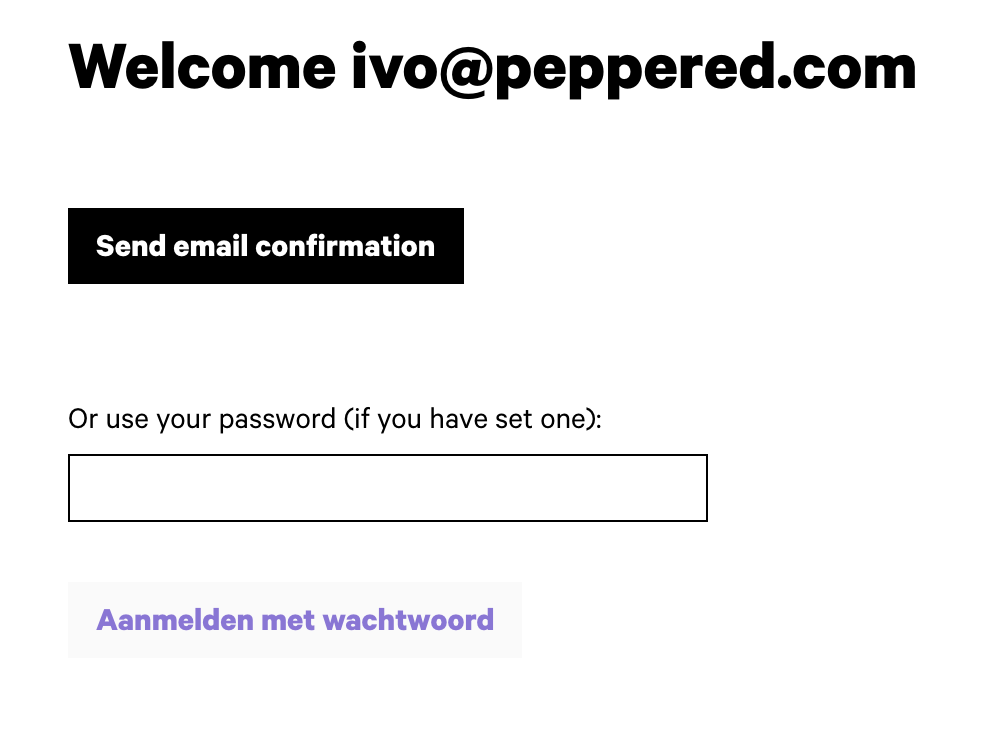
3. Check your e-mail and return to the website
After opting for a confirmation e-mail, the visitor will be asked to check your e-mail. In the e-mail a big login code can be found to bring the visitor back to the website. There is also a small link that logs you in without the code, but that usually only works if the link opens in the same webbrowser as the one where you started the login.

In the background we already checked if this e-mail address belongs to an existing account or is a completely new e-mail address.
- Existing accounts will be logged in right away. Personal data is updated from the ticketing system in the background, and the visitor can continu his journey, in a logged in state now.
- New e-mail addresses will be checked against your ticketing system database, to see if there is a ticketing account to connect it with. If the e-mail address is found in the ticketing system, all relevant personal data will be imported into Peppered and a Peppered account is created.
- If all required fields are filled in, the new visitor can continu his journey, in a logged in state now.
- If some more data is required, the new visitor will be asked to add the data and confirm first before continuing
- If no such e-mail address is found anywhere, a completely new account is created in Peppered and your ticketing system at the same time.
- If there are no further required fields, the new visitor can continu his journey, in a logged in state now.
- If some more data is required, the new visitor will be asked to add the data and confirm first before continuing
For all 3 situations there are optional extra steps you can show after the visitor returns to the website.
Optional extra steps
4. Set a password
If a visitor has not entered a password yet, an extra screen can be shown to set a password. Once a password has been given or the step is skipped, this screen will not appear again the next time. You can add a password in the "Add password" section in your account after log-in.
This optional step can be activated in the control panel (more info below)
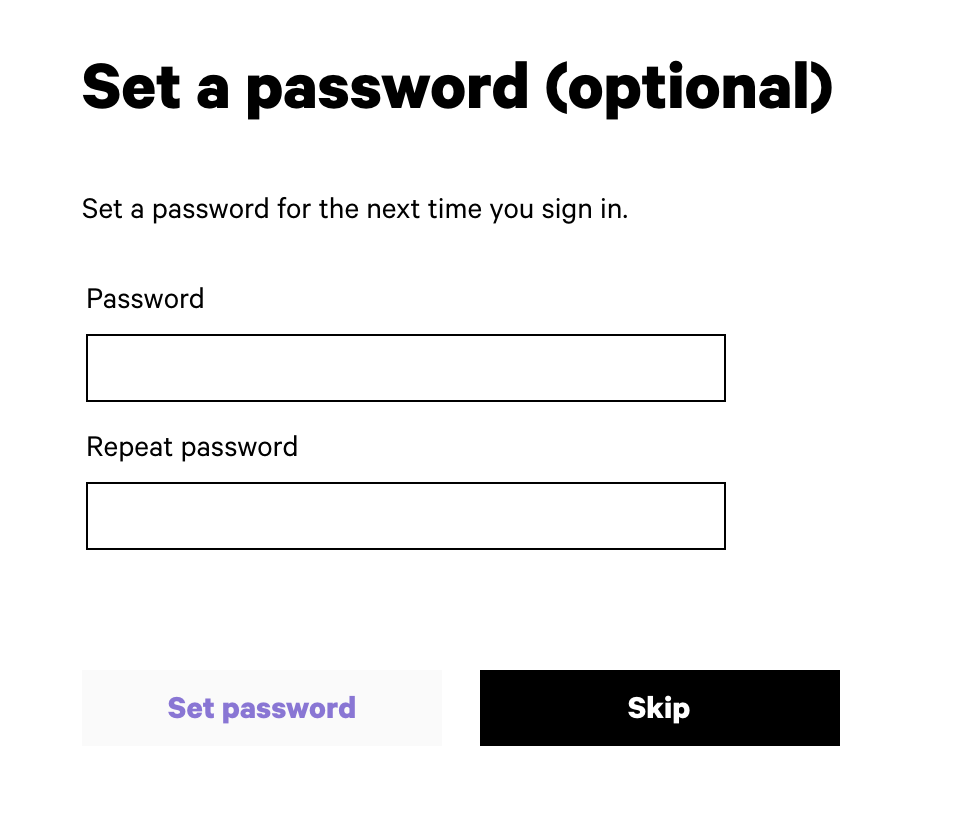
5. communication preferences
This optional step will show all opt-ins that have been activated for the login step.
As long as there are some opt-ins that you have not already opted into, this step will be shown again every few weeks when you log in, but not every time.
This optional step can be activated in the control panel (more info below)

Good to know: in the "opt-in" module in your dashboard you can manage which opt-in will be shown in the login flow by checking the 3rd box.

Steps 4 and 5 above are both optional and can be activated in the Control panel
Go to: Dashboard > System > Control Panel > Visitor accounts

6. Extra account data
When you need more than only an e-mail address from your visitors, all new created accounts will be prompted to fill in the required fields to finalise the login procedure.
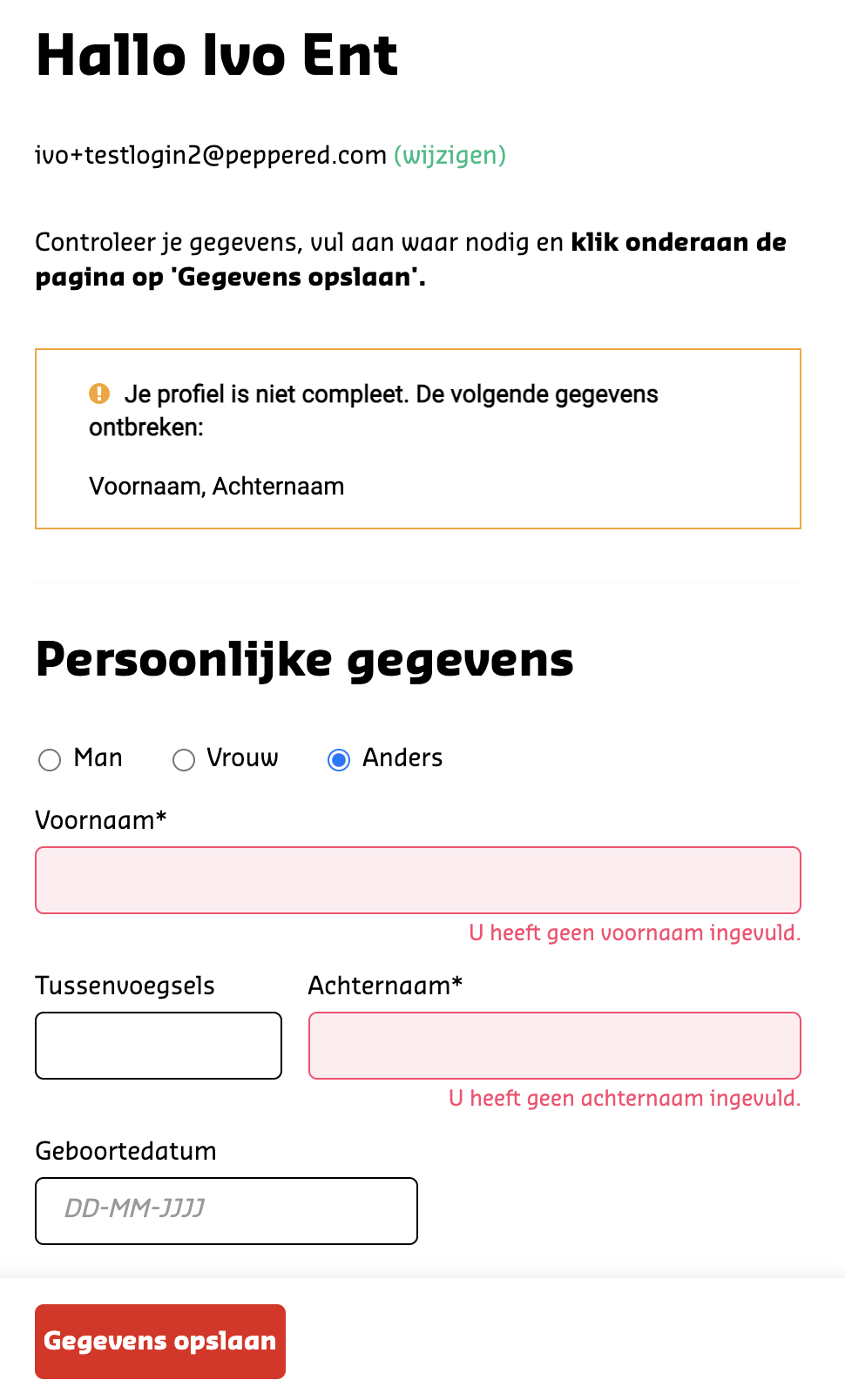
Which fields you want to show, either as "optional" or "required" in this form is entirely up to you. For this you use the "Visitor account fields" module. More about this module in our visitor account fields knowledgebase article.

Logging in with a confirmation code
When the confirmation e-mail is sent to a different device (like your phone) while you were browsing or ordering on, say, a laptop, you do not want to continue on your phone. The website identifies the new device and shows a notification that an order was started on a different device. A confirmation code is given that can be used to login on the original device. The original device will show the confirmation code field automatically on the opened page:
